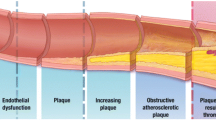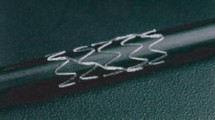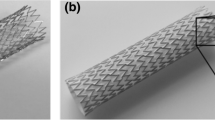Abstract
Over the last decade, there has been a significant volume of research focussed on the utilization of biodegradable polymers such as poly-l-lactide-acid (PLLA) for applications associated with cardiovascular disease. More specifically, there has been an emphasis on upgrading current clinical shortfalls experienced with conventional bare metal stents and drug eluting stents. One such approach, the adaption of fully formed polymeric stents has led to a small number of products being commercialized. Unfortunately, these products are still in their market infancy, meaning there is a clear non-occurrence of long term data which can support their mechanical performance in vivo. Moreover, the load carry capacity and other mechanical properties essential to a fully optimized polymeric stent are difficult, timely and costly to establish. With the aim of compiling rapid and representative performance data for specific stent geometries, materials and designs, in addition to reducing experimental timeframes, Computational bench testing via finite element analysis (FEA) offers itself as a very powerful tool. On this basis, the research presented in this paper is concentrated on the finite element simulation of the mechanical performance of PLLA, which is a fully biodegradable polymer, in the stent application, using a non-linear viscous material model. Three physical stent geometries, typically used for fully polymeric stents, are selected, and a comparative study is performed in relation to their short-term mechanical performance, with the aid of experimental data. From the simulated output results, an informed understanding can be established in relation to radial strength, flexibility and longitudinal resistance, that can be compared with conventional permanent metal stent functionality, and the results show that it is indeed possible to generate a PLLA stent with comparable and sufficient mechanical performance. The paper also demonstrates the attractiveness of FEA as a tool for establishing fundamental mechanical characteristics of polymeric stent performance.












Similar content being viewed by others
References
Agrawal, C., K. Haas, D. Leopold, et al. Evaluation of poly (l-lactic acid) as a material for intravascular polymeric stents. Biomaterials 13:176–182, 1992.
Anonymous: In www.amaranthmedical.com, 2014.
Auras, R. A., L.-T. Lim, S. E. Selke, et al. Poly (Lactic Acid): Synthesis, Structures, Properties, Processing, and Applications. New York: Wiley, 2011.
Bedoya, J., C. A. Meyer, L. H. Timmins, et al. Effects of stent design parameters on normal artery wall mechanics. J. Biomech. Eng. 128:757, 2006.
Bergström, J., and M. Boyce. Constitutive modeling of the time-dependent and cyclic loading of elastomers and application to soft biological tissues. Mech. Mater. 33:523–530, 2001.
Bressloff, N. W., SP, Al-Lamee, K.: Multi-objective design refinement of coronary stents. In: ECCOMAS 2012. Vienna, Austria, 2012.
Bressloff, N. W., Pant, S., Al-Lamee, K. G. Stent. In: Google Patents, 2014.
Buckley, C., and D. Jones. Glass-rubber constitutive model for amorphous polymers near the glass transition. Polymer 36:3301–3312, 1995.
Colombo, A., and E. Karvouni. Biodegradable stents:” Fulfilling the mission and stepping away”. Circulation 102:371–373, 2000.
Anonymous: Datasheet 04. In: Physical Properties. www.purac.com, 2010.
Conway, C., F. Sharif, J. Mcgarry, et al. A computational test-bed to assess coronary stent implantation mechanics using a population-specific approach. Cardiovasc. Eng. Technol. 3:374–387, 2012.
Etave, F., G. Finet, M. Boivin, et al. Mechanical properties of coronary stents determined by using finite element analysis. J. Biomech. 34:1065–1075, 2001.
Finn, A. V., G. Nakazawa, M. Joner, et al. Vascular responses to drug eluting stents. Arterioscler. Thromb. Vasc. Biol. 27:1500–1510, 2007.
Gonzalo, N., and C. Macaya. Absorbable stent: focus on clinical applications and benefits. Vasc. Health Risk Manag. 8:125, 2012.
Grabow, N., M. Schlun, K. Sternberg, et al. Mechanical properties of laser cut poly (L-lactide) micro-specimens: implications for stent design, manufacture, and sterilization. J. Biomech. Eng. 127:25, 2005.
Grogan, J., S. Leen, and P. Mchugh. Comparing coronary stent material performance on a common geometric platform through simulated bench testing. J. Mech. Behav. Biomed. Mater. 12:129–138, 2012.
Hayman, D., C. Bergerson, S. Miller, et al. The effect of static and dynamic loading on degradation of PLLA stent fibers. J. Biomech. Eng. 136:081006, 2014.
Hsiao, H.-M., Y.-H. Chiu, K.-H. Lee, et al. Computational modeling of effects of intravascular stent design on key mechanical and hemodynamic behavior. Comput. Aided Design 44:757–765, 2012.
Hsiao, H., C. Yeh, C. Wang, et al. Effects of stent design on new clinical issue of longitudinal stent compression in interventional cardiology. Biomed. Microdevices 16:599–607, 2014.
Hsiao, H.-M., C. Wang, C.-T. Yeh, et al. Does the reinforcement of end rings improve longitudinal stent compression of coronary. Exp. Clin. Cardiol. 20:1914–1922, 2014.
Hyun Kim, J., T. Jin Kang, and W.-R. Yu. Simulation of mechanical behavior of temperature-responsive braided stents made of shape memory polyurethanes. J. Biomech. 43:632–643, 2010.
Khan, K. A., and T. El-Sayed. A phenomenological constitutive model for the nonlinear viscoelastic responses of biodegradable polymers. Acta Mech. 224:287–305, 2013.
Leenslag, J., and A. Pennings. High-strength poly (l-lactide) fibres by a dry-spinning/hot-drawing process. Polymer 28:1695–1702, 1987.
Migliavacca, F., L. Petrini, M. Colombo, et al. Mechanical behavior of coronary stents investigated through the finite element method. J. Biomech. 35:803–811, 2002.
Moore, J. E., J. S. Soares, and K. R. Rajagopal. Biodegradable Stents: Biomechanical Modeling Challenges and Opportunities. Cardiovasc. Eng. Technol. 1:52–65, 2010.
Mortier, P., M. De Beule, P. Segers, et al. Virtual bench testing of new generation coronary stents. EuroIntervention 7:369–376, 2011.
Muliana, A., and K. Rajagopal. Modeling the response of nonlinear viscoelastic biodegradable polymeric stents. Int. J. Solids Struct. 49:989–1000, 2012.
Ogden, R., G. Saccomandi, and I. Sgura. Fitting hyperelastic models to experimental data. Comput. Mech. 34:484–502, 2004.
Onuma, Y., and P. W. Serruys. Bioresorbable scaffold the advent of a new era in percutaneous coronary and peripheral revascularization? Circulation 123:779–797, 2011.
Ormiston, J. A., and P. W. S. Serruys. Bioabsorbable coronary stents. Circ. Cardiovasc. Interv. 2:255–260, 2009.
Ormiston, J. A., P. W. Serruys, E. Regar, et al. A bioabsorbable everolimus-eluting coronary stent system for patients with single de-novo coronary artery lesions (ABSORB): a prospective open-label trial. Lancet 371:899–907, 2008.
Pauck, R., and B. Reddy. Computational analysis of the radial mechanical performance of PLLA coronary artery stents. Med. Eng. Phys. 37:7–12, 2015.
Anon: Abaqus 6.12 Analysis User’s Manual. DS SIMULIA Corp, Providence, RI, USA, 2012.
Soares, J. S., J. E. Moore, Jr, and K. R. Rajagopal. Constitutive framework for biodegradable polymers with applications to biodegradable stents. Asaio J. 54:295, 2008.
Soares, J. S., J. E. Moore, Jr, and K. R. Rajagopal. Modeling of deformation-accelerated breakdown of polylactic acid biodegradable stents. J. Med. Devices 4:041007, 2010.
Srivastava, V., S. A. Chester, and L. Anand. Thermally actuated shape-memory polymers: Experiments, theory, and numerical simulations. J. Mech. Phys. Solids 58:1100–1124, 2010.
Staehr, P.: ABSORB Bioresorbable Vascular Scaffold System. In: 17th Asian Harmonization Working Party Annual Conference, edited by Vascular, A. Taipei, 2012.
Sweeney, J., R. Spares, and M. Woodhead. A constitutive model for large multiaxial deformations of solid polypropylene at high temperature. Polym Eng. Sci. 49:1902–1908, 2009.
Tamai, H., K. Igaki, T. Tsuji, et al. A biodegradable poly-l-lactic acid coronary stent in the porcine coronary artery. J. Interv. Cardiol. 12:443–450, 1999.
Van Der Hoeven, B. L., N. M. M. Pires, H. M. Warda, et al. Drug-eluting stents: results, promises and problems. Int. J. Cardiol. 99:9–17, 2005.
Vieira, A., J. Vieira, J. Ferra, et al. Mechanical study of PLA-PCL fibers during in vitro degradation. J. Mech. Behav. Biomed. Mater. 4:451–460, 2010.
Vieira, A. C., R. M. Guedes, and V. Tita. Constitutive modeling of biodegradable polymers: Hydrolytic degradation and time-dependent behavior. Int. J. Solids Struct. 51:1164–1174, 2014.
Waksman, R. Promise and challenges of bioabsorbable stents. Catheter. Cardiovasc. Interv. 70:407–414, 2007.
Wang, Y.: Bioabsorbable scaffolds made from composites. In: Google Patents, 2013.
Weir, N., F. Buchanan, J. Orr, et al. Degradation of poly-l-lactide. Part 1: in vitro and in vivo physiological temperature degradation. Proc. Inst. Mech. Eng. H J. Eng. Med. 218:307–319, 2004.
Weir, N., F. Buchanan, J. Orr, et al. Processing, annealing and sterilisation of poly-l-lactide. Biomaterials 25:3939–3949, 2004.
Welch, T. R., R. C. Eberhart, S. V. Reddy, et al. Novel bioresorbable stent design and fabrication: Congenital heart disease applications. Cardiovasc. Eng. Technol. 4:171–182, 2013.
Welt, F. G. P., and C. Rogers. Inflammation and restenosis in the stent era. Arterioscler. Thromb. Vasc. Biol. 22:1769–1776, 2002.
Wong, Y., Z. Stachurski, and S. Venkatraman. Modeling shape memory effect in uncrosslinked amorphous biodegradable polymer. Polymer 52:874–880, 2011.
Eswaran, S. K., Kelley, J. A., Bergstrom, J. S. et al. Material Modeling of Polylactide. In: SIMULIA Customer Conference. 2011.
Acknowledgements
The authors like to acknowledge the funding of this project through a Hardiman Scholarship at NUI Galway.
Conflict of Interest
Author Anna C. Bobel, Author Susana Petisco, Author Jose R. Sarasua Author Wenxin Wang and Author Peter E. McHugh declare that they have no conflict of interest.
Human and Animal Rights and Informed Consent
No human and animal studies were carried out by the authors for this article.
Author information
Authors and Affiliations
Corresponding author
Additional information
Associate Editor Ajit P. Yoganathan oversaw the review of this article.
Electronic supplementary material
Below is the link to the electronic supplementary material.
Rights and permissions
About this article
Cite this article
Bobel, A.C., Petisco, S., Sarasua, J.R. et al. Computational Bench Testing to Evaluate the Short-Term Mechanical Performance of a Polymeric Stent. Cardiovasc Eng Tech 6, 519–532 (2015). https://doi.org/10.1007/s13239-015-0235-9
Received:
Accepted:
Published:
Issue Date:
DOI: https://doi.org/10.1007/s13239-015-0235-9




